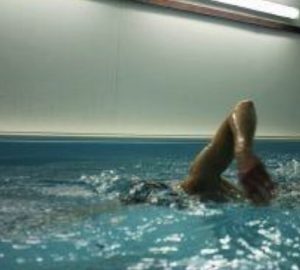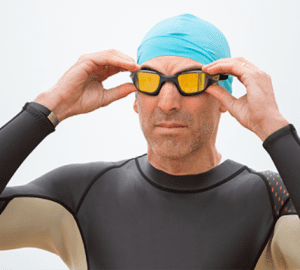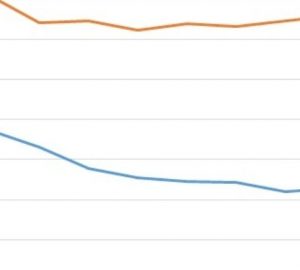Back to the open water: training session from South West Swim
As so much time has been spent away from water, our first weeks of swimming want to be easy, and very technically focussed.
James Guy recently gave an interview on BBC news and stated that for every session missed it will take two sessions to bring it back, a common thought in the competitive swimming world.
As many articles have said, please do not get back into the water thinking you can start where you left off, you won’t be able to. If you try to do too much too soon it opens up your risk of injury considerably and you may feel exhausted and need to miss sessions because of this. It may also cause you to start questioning your swim skills and ability and be a disappointment.
So what we must do when we return to the water after our forced break is take it easy, enjoy your swimming and get a feel for the water once again. Your speed and endurance will come back in time. At this stage please do not worry about distance or times, the only times you should be keeping an eye on is the time spent in open water as it is still a bit nippy in the middle of May.
With this in mind, we have written a short session plan that can be adapted for your venue, either swimming short buoy to buoy swims, a couple of minutes of swimming or to a set stroke count. It is an adaptable session that will focus on some key areas of your swimming technique (breathing, kick, catch and pull) without too much thought.
Pre Session Preparation
A list of things to ensure you have thought of, as it may have been a while. Remember many lakes are not opening changing areas, so you may wish to think about wearing your wetsuit to the lake. Wear a pair of shorts over the top in your car (or joggers) to lessen the chance of damaging the suit.
Kit:
- Costume
Wetsuit (see our video on how to put on your wetsuit with no help here)
- Towel (or two, one for the car seat afterwards)
- Swim cap (Your awesome SWS cap preferably)
- Goggles
Swim Band or Pass to get into the lake
Booking confirmation (if needed at your lake)
- Flip flops or old trainers to walk around (you may be hanging around a bit longer than usual)
- Clothes for after you get out (don’t forget your undies)
Optional Kit:
- Dry robe / changing robe
- Wetsuit booties and / or gloves
- Tow Float or dry bag (Highly recommended)
- Ear plugs (protection to ears in the cold water)
- Swim bag to store your kit
- Protective cases for phones and keys etc
Pre Session
Pre Session Warm up
Normally we would advise you to do some pre session warm up exercises such as running on the spot, high knees, leg swings and arm swings. If you can do these whilst waiting please do. However you may not be able to due to social distancing and waiting in line.
Getting into the water
The key to a safe and enjoyable swim in cooler water is your acclimatisation. Basically what we call ‘short term acclimatisation’ and what you do to get into the lake to lessen the effects of the cold water on your body and breathing.
Perform the routine highlighted in our recent video (see the video here)
Noted simple steps of short term acclimatisation:
- With wetsuit, hat and goggles on, head to the water’s edge
- Slowly walk into the water but ONLY to the hips
- Whilst walking in make sure your hands are also in the water, and leave them there
- When ready sink down to the armpits, the water will naturally enter the suit through the zip (this is your Ooooooh moment although if cold you may say other words too)
- When ready submerge the shoulders
- When ready splash your face with water and breathe out as you do so, splash back and front of neck as well
- Float up onto your back and then your front
- Place your face in water and breathe out under control, repeating this 3-5 times and inhaling and exhaling in a relaxed manner. Have a good look around under water and get used to the light and the environment
You are now ready to swim, take it easy and chill into the warm up
Warm Up
Key: Take It Easy, Focus on Technique. Times do not matter!
Perform a nice and easy swim to the first buoy or swim for a period of 2-3 minutes or 200 strokes. During this swim focus on nice relaxed breathing into your normal breathing pattern. As soon as your face is in the water you should be thinking about breathing out. Remember the mantra of saying out loud “Bubble bubble breathe (don’t say breathe, that’s when you’re taking air in)” or humming a tune or counting strokes. Anything that’s a thought process to get you thinking about breathing out under the water in a relaxed way, remember relaxation is key in this first step.
Once you have performed this first swim stop, check your kit is good to go and adjust where needed. Importantly check YOU are ready to go physically and mentally. If you are not ready return to the starting point at the bank and address the issues or exit the water. Be safe, there is no stigma in calling it an early day. I have in the past and I spend 100’s of hours in the lakes every summer coaching and swimming.
Main
This is designed to be a very basic session plan to get you back into the water using a mix of technique work and some longer swim efforts. It has been written so you don’t need to overthink your technique points and bring some basic level of skills and feel into your swim after the lockdown layoff.
If you have a Finis Tempo trainer it would be an ideal companion to your swim on stroke rate mode (mode 3). I would suggest your base stroke rate is set to -2 or -4 for your first swim back. Other kit like paddles could be used if you wish to really work on your catch technique.
The suggested technique work focuses on breathing, sighting, and catch pull. If you can’t breathe bilaterally it is worth working on, but not the end of the world for these back to water sessions. Relax, chill and breathe to your normal pattern if this is the case.
Part 1
Buoy to Buoy swims – Short distances swum nice and relaxed and focusing on technique.
Resting Tip: When resting between buoys perform the Ballet Leg Kick Drill. This drill is a static drill to get you focusing on your leg kick being generated from the hip and glutes, rather than the knee. Stay upright and start kicking from the hip/glutes with a loose knee and floppy ankle, pointing the toes. When you start swimming again simply bring yourself into your swim position whilst still lightly kicking (heavy kick is not needed)
Rest Periods: Between the buoy to buoy sections I would advise no more than a minute’s rest between each. This is so we don’t get cold, aim for 30 seconds rest to reset and refocus and then start the next swim. This should be fine as we are not looking to be out of breath in this whole session, it should be an easy paced swim throughout.
As mentioned you can swim this session from buoy to buoy (short distances are best) or limit your technique based swims to 2-3 minutes or 160-200 strokes. It is up to you and your lake layout on how you perform the session exactly.
- Start point to rest point 1 – Focus on Breathing every 3rd breath (bubble bubble breathe)
- Rest point 1 to rest point 2 – Focus on sighting skills, aim to sight every 3rd breath in a crocodile eyes fashion. Use your natural breathing pattern (and remember to keep sighting through the whole session, not just this bit). (see our sighting video here)
- Rest point 2 to rest point 3 – Focus on hand entry, entering finger tips first and spearing into the water about 6 inches below the water surface. Breathing pattern of 3/2/3/2/3/2 if you can (twice to one side, then twice to the other side).
- Rest point 3 to rest point 4 – Focus on good catch and pull. We should always be looking at pushing water backwards with a bent elbow (see image)
Visualise scull 1 and scull 2 positions when executing this phase of the stroke. Use your natural breathing pattern.
(Alternative part to this session. Only perform if the lake is not busy and you have no swimmers in close proximity in front or behind you)
20 strokes of scull 1 into 10 strokes of scull 2 then 20 strokes swim, repeat until you get to the next buoy.
You are now at a point where you can either repeat the above technique set or start to do a relaxed swim to finish your lpat or section of swim. It’s important to assess your physical and mental ability at this point and choose a distance that is suitable. Remember to consider the water temperature.
Part 2
Returning swim. This portion of the swim is from either resting point 4, or resting point 8 if you repeated the technique focus again. We have 2 options to perform this swim.
- Perform a constant easy swim back to your starting buoy at the beginning of the session, Focus on the technique points you have performed in part 1 of the session.
- Perform ‘timed’ swims of either 1, 2 or 3 minutes (timed as in the length of time you swim, not a time trial)
- Perform either of the 2 options above with a focus on good form and developing your sighting technique (see our sighting video here)
You should now be back to the starting point of your swim course. Once again assess your physical and mental ability, take into account the water temperature. Make your way to the swim exit if you have completed your goals for the session.
If you are continuing your swim then:
Part 3 – more laps
- Perform your next laps repeating the technique focused plan, i would advise this step for your first few swims back
- Perform an easy continuous swim around your swim course. Remember it’s an easy swim trying to get that feel back. We should not be breathing heavily during or afterwards. Rest where needed should you need to.
Build on your swim distance over time, and with it your endurance and speed will start to return. Don’t do too much too soon!
Part 4 – cool down swim
To be done after your main swim (of course) and from the course start buoy. Swim back to shore nice and easy, try to fit in some short bursts of rotational drill to stretch out, such as 6-3-6 or Broken Arrow drills.
Exit the water as directed by lake staff, observing all rules in place by the venue you are visiting.
Thank You. I hope you enjoyed this open water session.
Any questions you can contact me – Jason Tait – Head Coach, South West Swim








